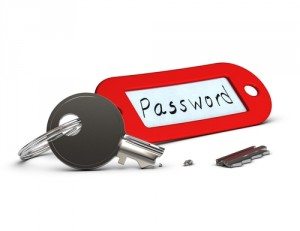Think of all of the websites that you utilize online that require passwords to protect your sensitive information. You have a password for your online bank account, your email, your credit card accounts — the list goes on.

Out of all of those websites, however, how many unique passwords do you have? Not too many? If a hacker deciphers even one password to your account, your entire online life would be in serious jeopardy.
According to credit firm Experian, the typical online user has 26 accounts—and only five passwords. Couple that with the fact that 90 percent of passwords are vulnerable to cracking, and it becomes clear that passwords are not quite as effective when it comes to protecting sensitive information.
Quite simply, passwords are failing to get the job done in an era where digital security is of the utmost importance. They are failing because they are easy to crack. A better solution, therefore, is to take a multilayered approach to online security providing protection beyond the initial scope of a password. A multilayered approach to online security involves implementing advanced authentication requirements to verify a user or application’s identity.
In this regard, mobile is playing a pivotal role in the multilayer approach to security at the enterprise level. One advantage of mobile is that applications can use a process called sandboxing, in which applications on a device cannot access the digital information of other applications. This is imperative when it comes to the prevention of advanced malware, as taking the completion of a transaction out of the compromised desktop channel may be the only way to defend against evolving malware threats.
Additional security involves PIN locks and embedded, transparent one-time passcodes (OTP), as well as digital certificates for mobile devices.
Believe it or not, authenticating an identity is much easier to accomplish on a mobile device than on a desktop or laptop computer because these traditional computer platforms were designed to share device memory as a basis for architecture, unlike sandboxed mobile applications.
While 71 percent of IT executives still believe that the traditional desktop or laptop computer is more secure than a mobile device, the reality is that mobile devices are in fact more secure. That is why 65 percent of organizations are placing mobile security as a critical priority moving forward.
Once you understand how comprehensive a multilayered mobile approach is to overall security, a basic password for an important account seems about as safe as locking a bicycle with a rope. While passwords are still the status quo for consumers, organizations looking for advanced security measurements should seriously consider the comprehensive security benefits that mobile technology currently affords.


